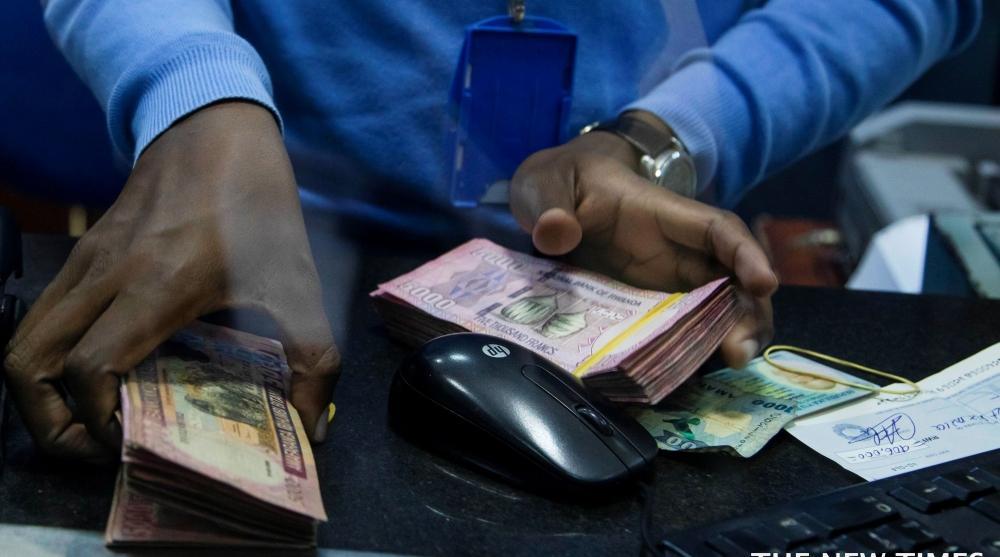Africa-Press – Rwanda. Rwanda’s Urban Consumer Price Index (CPI), the main gauge of inflation, rose by 7.3 per cent year-on-year in July, up from 7 per cent in June, according to the latest figures from the National Institute of Statistics of Rwanda (NISR).
The sharpest increase came from medical costs, which surged by 70.7 per cent compared to the same month last year, and 69.6 per cent month-on-month.
Aloys Nzabonimpa, founder and Managing Director of Le Medical Ltd, a wholesaler and distributor of pharmaceutical products, attributed the spike in health costs mainly to the depreciation of the franc against the US dollar.
“The medical products we use are imported, and we purchase them in foreign currency, especially dollars,” he said.
By the end of December 2024, the Rwandan Franc had depreciated by 9.42 per cent against the US dollar, according to the National Bank of Rwanda (BNR). The franc has continued to lose value since then.
Figures show that the US dollar, which was being bought at Rwf1,298.98 and sold at Rwf1,324.96 last year, is now being bought at Rwf1,439.14 and sold at Rwf1,449.14.
Nzabonimpa suggested that local production could provide some relief, although certain raw materials would still need to be imported.
NISR data show that the imported goods index rose by 9.3 per cent in July.
Meat prices soar
The other aspect that saw a sharp increase is meat. Prices jumped 30.7 per cent year-on-year.
Themistocles Munyangeyo, a fish farmer in Kimironko Sector in Gasabo District, links the trend to the rise of living costs and rising fuel prices, which have had a knock-on effect on transport and the cost of imported animal feed ingredients.
“Ingredients like soybeans, silverfish, and maize are also staple foods for people, so demand is always high. That pushes up prices further,” he said.
Recently, exotic chicken was Rwf2,500 per kilo at Kimironko Market. Today, it’s Rwf3,200. Tilapia from farmers was Rwf4,500 two weeks ago, now it’s Rwf5,000. Retailers are charging Rwf6,000, he said, adding that it takes 1.5kg of feed to produce one kilo of fish.
“Last year, 1kg of fish feed cost Rwf1,250. Now it’s Rwf1,400. Rent, too, has gone up, from Rwf500,000 to Rwf850,000 per month, and it might rise again.”
Restaurants, hotels feel the pinch
Restaurants and hotels recorded a 20.1 per cent annual increase and a 2.1 per cent monthly rise.
Eric Muvunyi, Marketing Manager at Grand Legacy Hotel, said higher hotel and restaurant prices were partly driven by fuel costs, which have a knock-on effect on farmers.
“Even vegetable farmers are affected because they need fertilisers, and their prices have gone up,” he said. “When their produce is transported, they also face higher costs.”
Muvunyi also blamed the stronger dollar for higher prices.
“We are still importing a lot of what we consume because we do not produce enough for our market. When we buy, we use foreign currency, and its value is rising every day,” he noted.
Transport hit by fuel prices
Transport prices, on the other hand, rose by 7 per cent year on year.
Noel Nkurikiye, Secretary General of the Rwanda Professional Truck Drivers Union and Managing Director of Consultant Tarzan of Transport Rwanda (COTATRARWA), said transport prices were highly fueled by rising fuel costs and non-tariff barriers.
He explained that while East African Community (EAC) countries had previously worked to reduce such barriers, such as limiting the number of weighbridge stops to three, some deactivated checkpoints still have sensors that force trucks to stop and head to the weighbridges.
“This increases delays and costs. A stop that should take 10 minutes sometimes turns into long queues, which means higher expenses for transporters,” he said.
According to the Rwanda Utilities Regulatory Authority (RURA), petrol prices increased to Rwf1,803 per litre and diesel to Rwf1,757 in July, up from Rwf1,663 and Rwf1,652, respectively, in June 2024.
Other items
According to NISR, prices of alcoholic beverages, tobacco, and narcotics rose by 12.2 per cent year-on-year and 3.6 per cent month-on-month.
Overall, food and non-alcoholic beverages went up by 6.4 per cent year-on-year, driven by a 30.7 per cent rise in meat, 8.9 per cent in bread and cereals, and 8.3 per cent in milk, cheese, and eggs.
Source: The New Times
For More News And Analysis About Rwanda Follow Africa-Press






